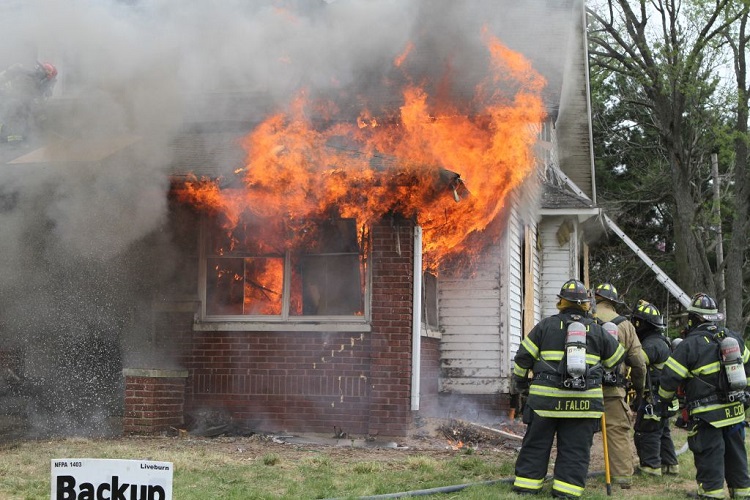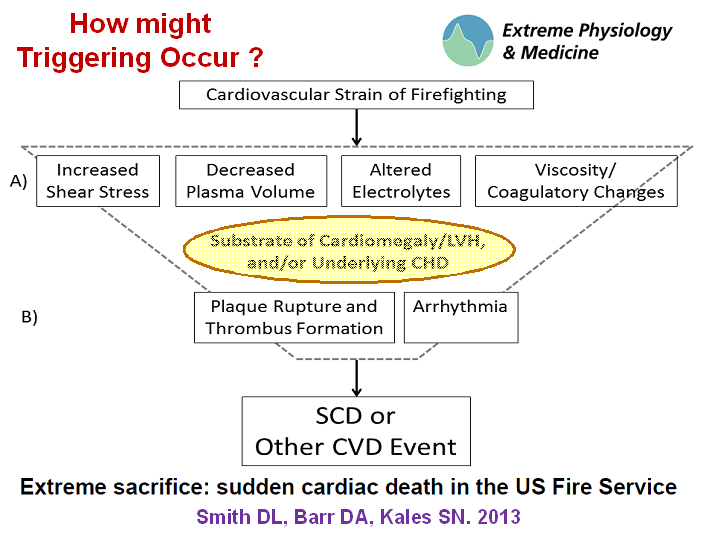

Photo by Tim Olk.
By Todd J. LeDuc
The chart below (Figure 1) from a 2011 study demonstrating the steady progression of firefighter body mass index (BMI) on the vertical climb should ring alarms for many fire departments. This trend was in line with associated research such as the FLAME study, which demonstrated that United States firefighters gain approximately three pounds of body weight annually. Some of these facts are also consistent with trends that have been seen in the general population such as with our school-age children and are troubling in the public health spectrum as well. We have solid research demonstrating that obesity significantly elevates the risk of cardiovascular disease and stroke, hypertension, diabetes, and cancer.
FIGURE 1. Study Chart for Firefighter Body Mass Index

The prevalence of obesity in the fire service transcends provider types such as career, volunteer, or combination departments. In fact, the prevalence of excess weight is actually higher than general population controls, i.e., nonfirefighters. We can attribute this to the rigors of fire service profession, which includes shift schedules, abnormal sleep cycles, stress effects, and poor nutritional habits, among other factors (Figure 2).
FIGURE 2. Stress Factors for Sudden Cardiac Death in the Fire Service

The complicating factor for this excess weight in firefighters is compounded by the cardiovascular and physiological strains of firefighting. Research work done by Dr. Denise Smith from Skidmore College and Dr. Stefanos Kales of Harvard University has been able to demonstrate the changes that occur within the body during the course of rigorous fireground operations. Their work certainly explains why the majority of cardiovascular events and line-of-duty deaths occur on the fireground during fireground operations. A succinct pictorial of the changes that occur within your body during exposure to fire operations are pictured above. So, what actions are needed from here for firefighters to survive and not “flame out”?
RELATED: Krueger on Cardiovascular Training ‖ Study: Cardiovascular and Chemical Exposure Risks in Modern Firefighting ‖ Beasley on Firefighter Down: Cardiac Arrest Drill
Physiological changes occur during the stresses of firefighting. Preventative actions include proper nutrition and conditioning to ensure that unhealthy excess weight is not putting you at further risk. Proper hydration is also an important factor such as substituting water for sugar or caffeinated drinks. When controlled, modifiable risk factors such as hypertension, elevated blood sugars, and high cholesterol are all dramatically linked to the reduction of cardiovascular events.
Finally, routine annual medical examinations are imperative for firefighters. National Fire Protection Association (NFPA) 1582, Standard on Comprehensive Occupational Medical Program for Fire Departments, guides clinicians in the care and examination of firefighters. The International Association of Fire Chiefs (IAFC) Safety, Health and Survival Section (SHSS) has developed a guide to implementing 1582 which is available online at http://www.iafcsafety.org/?navItemNumber=612.
Additionally, the IAFC SHS is working on a project to develop a simple template for health care providers as to the appropriate examination and care of firefighters that is modeled after NFPA 1582 and the IAFF/IAFC Wellness Fitness Initiative that will be available soon.
Where do we go from here? Certainly, there are several controllable factors that can be addressed to reduce fireground risk for you and your fellow firefighters. A basic medical examination and screening evaluating controllable risk factors such as weight, hypertension or high blood pressure, elevated blood sugar levels, and elevated LDL cholesterol is an excellent start and should be done annually. A supervised and appropriate physical exercise program is also a necessity for fireground survival. Get started today and don’t become another preventable statistic!
Todd J. LeDuc, MS, CFO, CEM, FIFirE, is a 26-year veteran of and an assistant chief with the Broward County (FL) Fire Service, a career internationally accredited metro department of 750 members. He has served as the elected secretary of the board for the International Association of Fire Chief’s Safety, Health & Survival Section. LeDuc is also a peer reviewer for the Center for Public Safety Excellence’s agency accreditation and professional credentialing. He can be contacted at tjlbcems@aol.com.

